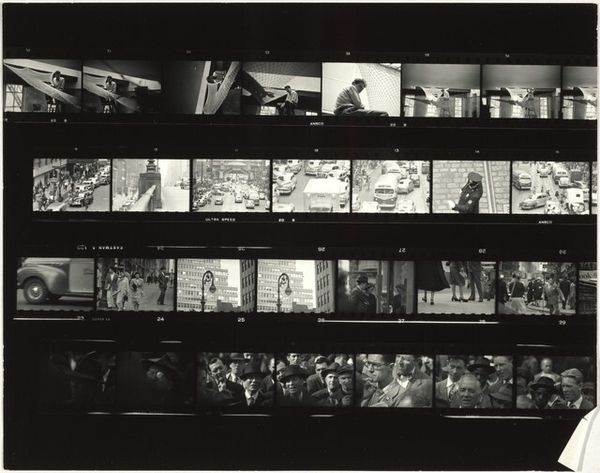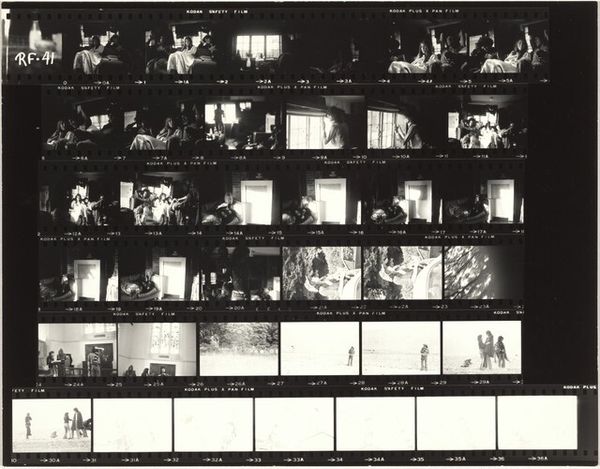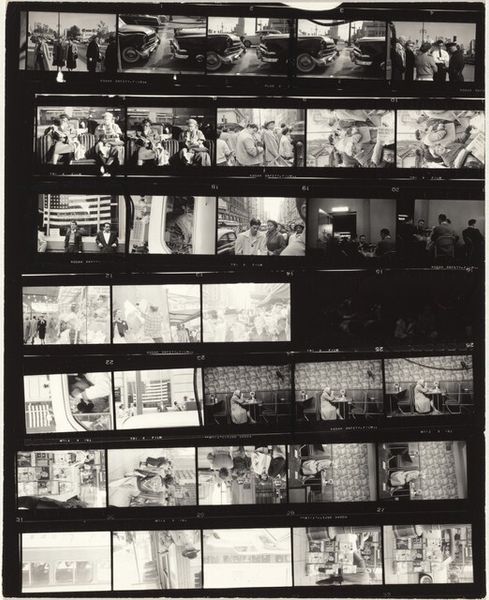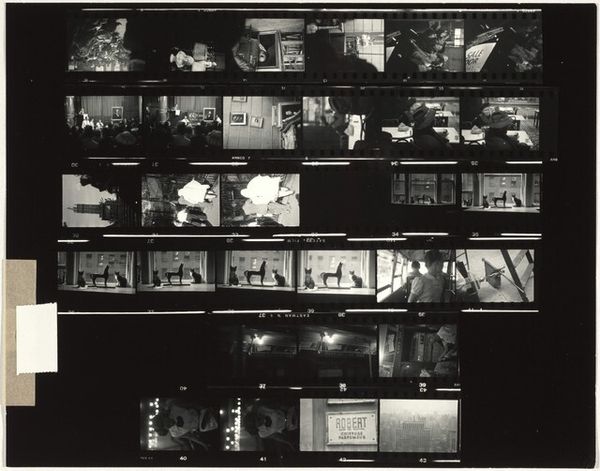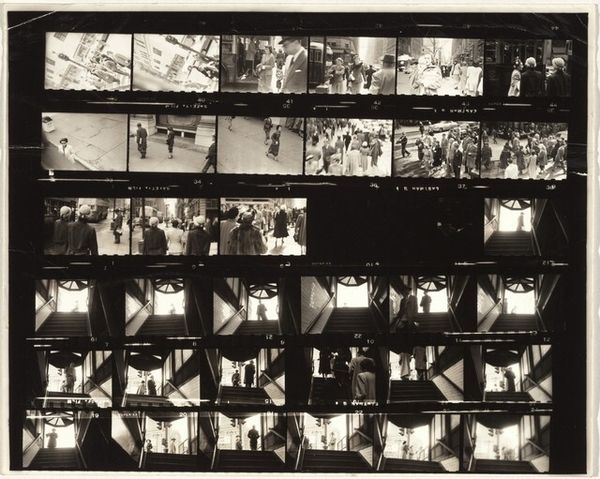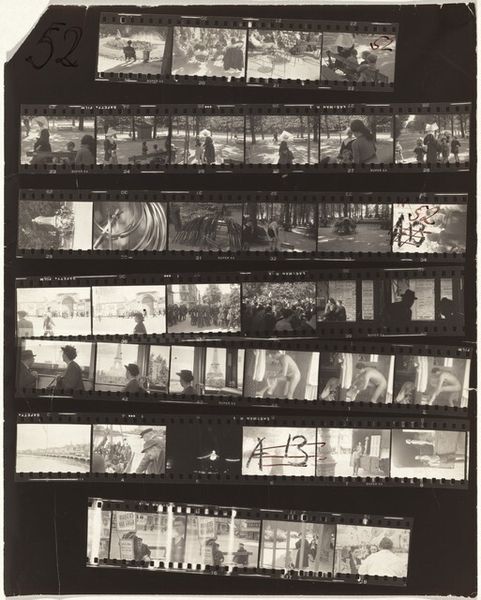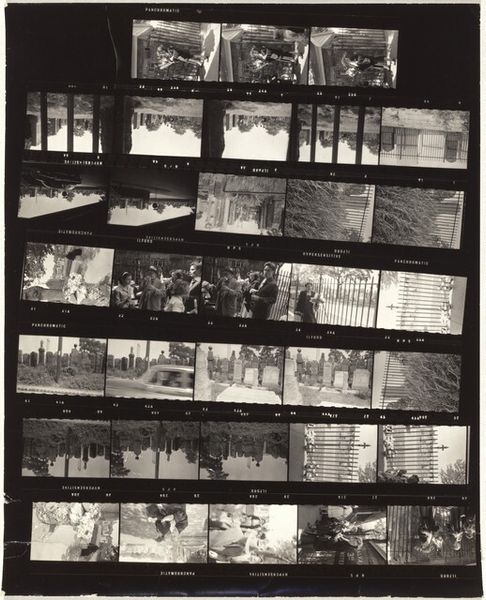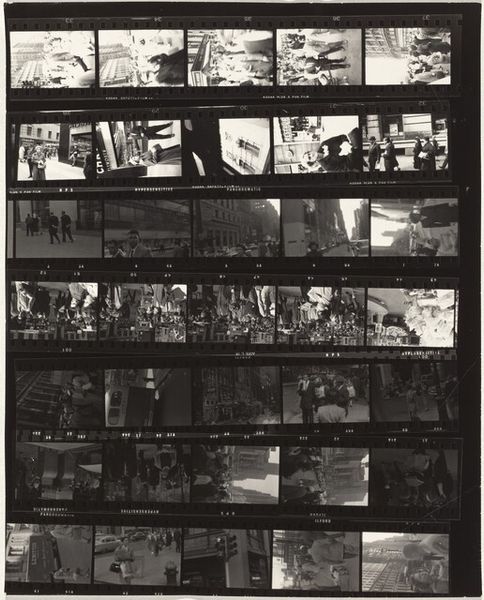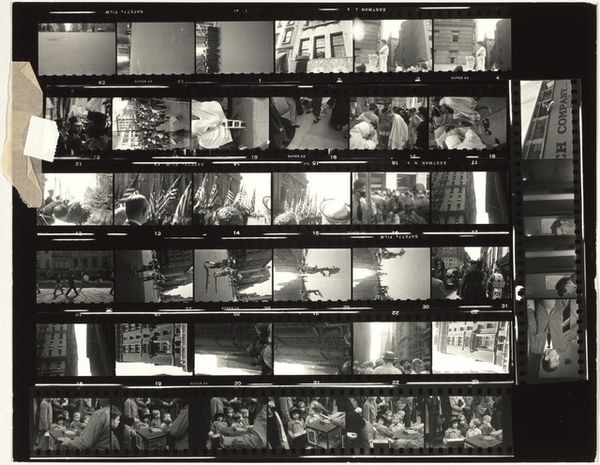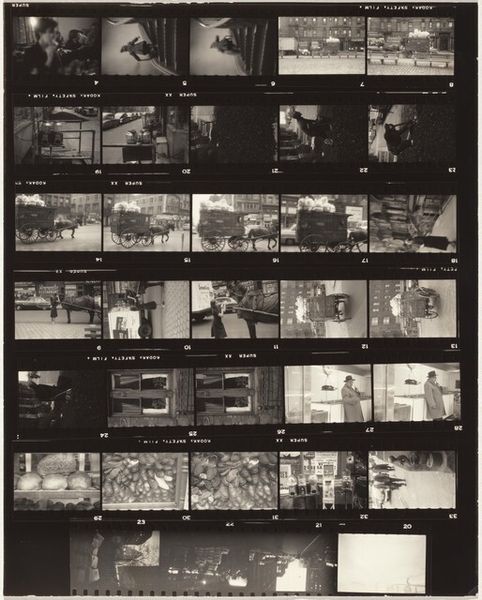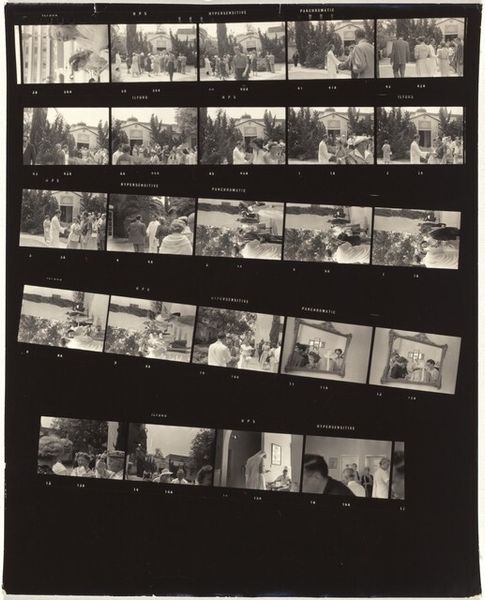
contact-print, photography, gelatin-silver-print
#
portrait
#
film photography
#
contact-print
#
street-photography
#
photography
#
culture event photography
#
gelatin-silver-print
#
pop-art
Dimensions: overall: 20.2 x 25.3 cm (7 15/16 x 9 15/16 in.)
Copyright: National Gallery of Art: CC0 1.0
Curator: I see a narrative even before knowing its context, almost like film stills laid bare, full of intimate scenes. Editor: Indeed! We’re looking at Robert Frank’s contact print from 1959, "At Walter Gutman's--Long Island beatniks no number.” It's a gelatin-silver print, showing a sequence of photographs taken at what looks like a social gathering. Curator: It's grainy, raw... so different from the polished images we usually associate with the late fifties. I almost feel like I'm peeking into someone’s memory. Editor: Frank often embraced that raw, unpolished aesthetic. He documented a generation pushing against the established norms of the time. Note the way these multiple images in sequence imply time passing, an unfolding story. Curator: These groupings around tables... There's something ritualistic about it, like a modern-day Last Supper, full of angst and searching. Are these beatniks seeking some sort of shared salvation? Editor: That's an interesting angle. The table as a symbol of communion—shared meals, discussions, perhaps a search for identity beyond mainstream society. It emphasizes community and fellowship but is undercut by that feeling of searching. Curator: The black and white only emphasizes that sense of being outside color, of existing in a liminal space. It highlights a dichotomy that amplifies emotion, doesn't it? Editor: Absolutely, black and white distills the scene down to its essentials. It amplifies the stark contrasts of the era. You have traditional forms of social life confronted by emerging subcultures trying to take shape. Curator: Knowing Frank, there's got to be some critique here, right? A subtle questioning of authenticity within that beatnik culture itself. Editor: He wasn’t afraid to turn his lens inwards. It wasn't blind adoration, but a complex engagement with the nuances of American life, counter-culture included. It captured people living it—performing their lives almost—but with the question of whether there really was authenticity. Curator: I find it strangely reassuring; even amidst cultural upheaval, people seek connection, albeit with a gritty, honest filter. Editor: A poignant thought. It's a visual document reminding us that counter-cultures eventually become part of the culture—another layer in the ongoing conversation of identity. Curator: This piece stays with me for its imperfect beauty, a perfect mirror of our shared human yearning to be seen and understood, even if just for a flicker of a moment, caught on a grainy photograph. Editor: And perhaps, through understanding others, we can see and better understand ourselves, one snapshot at a time.
Comments
No comments
Be the first to comment and join the conversation on the ultimate creative platform.
